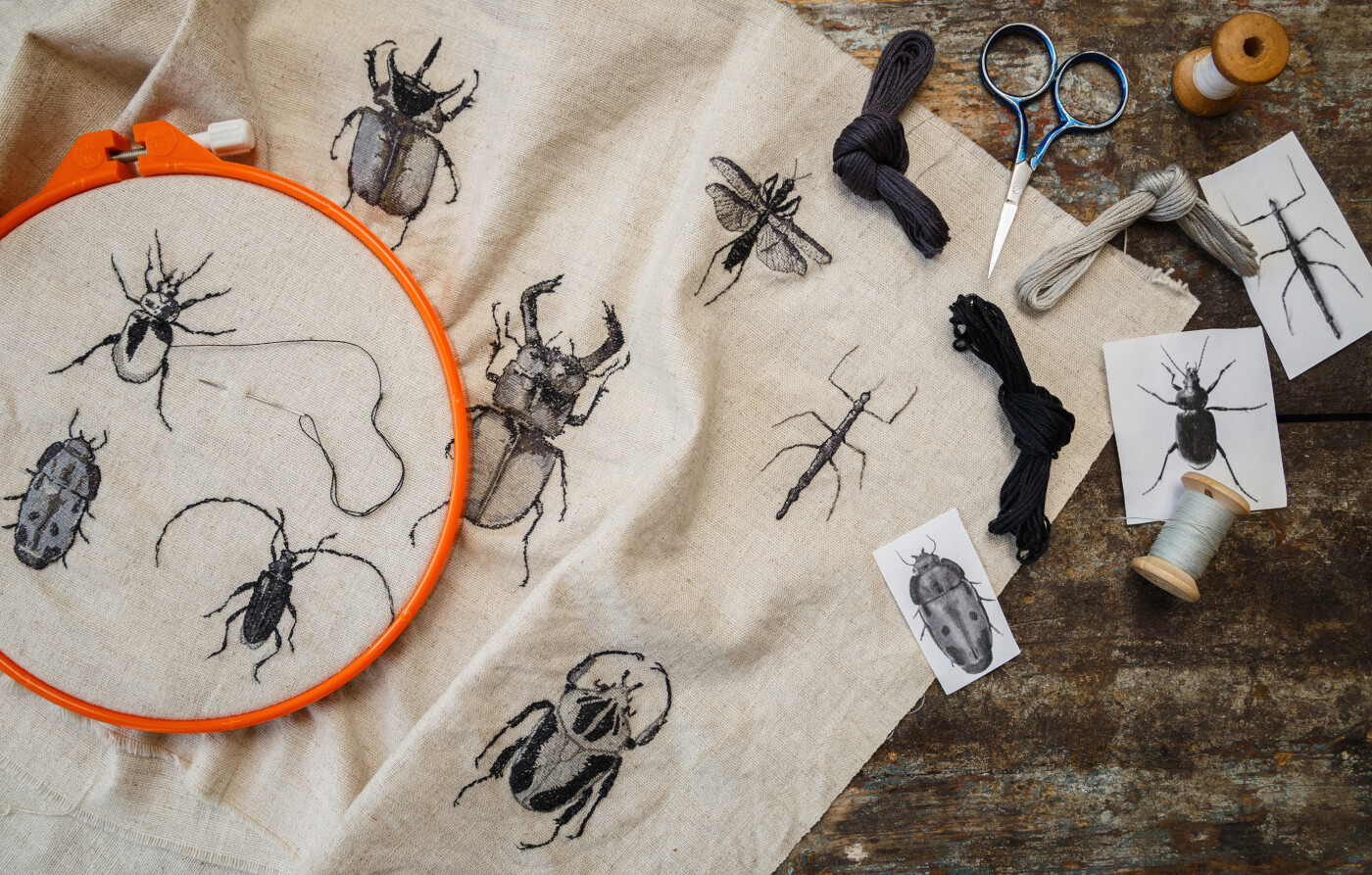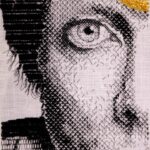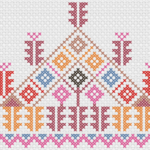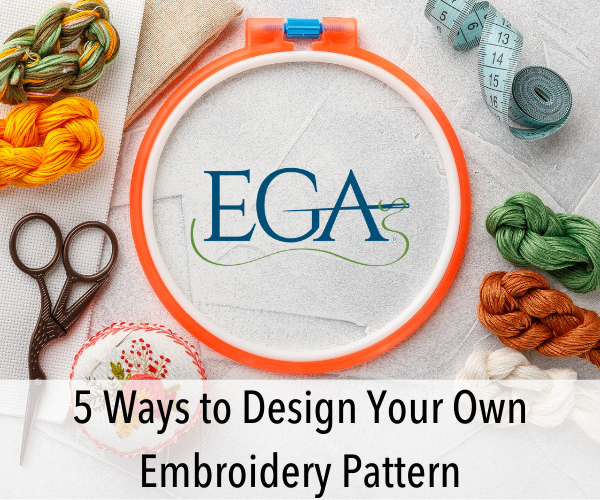
Sometimes the exact embroidery project you want to make simply doesn’t exist. Designing your own embroidery pattern may seem daunting, but there are several avenues available for bringing the gorgeous idea out of your head and onto the canvas.
Draw it Yourself
If you’re naturally artistically inclined, one of the best ways to design your own embroidery pattern is by drawing it yourself.
The most straightforward method would be to draw your design directly onto lightweight trace paper, pin the paper to your canvas, then stitch through both paper and fabric.
If you feel really confident about your drawing abilities, use a water soluble pen to draw directly onto the canvas.
Another option is carbon transfer paper. Simply draw your design on a regular piece of paper. Pin the carbon transfer paper to your canvas, then pin your drawing on top of the carbon paper. Using a stylus (the point of a pen cap will do in a pinch!), trace over your design so that the carbon transfers the design to the canvas.

Working with self adhesive wash away stabilizer is a great option when you’re drawing or tracing designs. Draw a design you would like to use, then lay the stabilizer over your design and trace it with pen or pencil. Wash away stabilizers are usually very thin and easy to trace, but if you’re having trouble, tape the whole thing to a window to take advantage of the light. Once your tracing is finished, cut out your design and stick it to your canvas. When you’re finished stitching, simply soak your work in warm water to dissolve the stabilizer.
EGA members can borrow reference books from the EGA library, a fabulous resource for stitch inspiration that can be used when designing your own hand embroidery patterns.
Embroidery Software
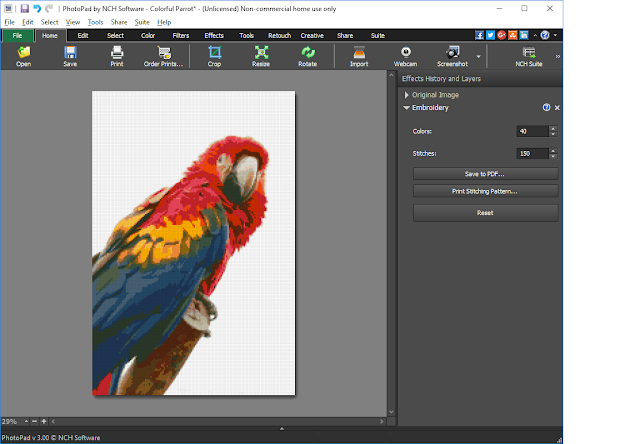
There are a myriad of options for embroidery software if you’re embroidering with a machine, but what about hand embroidery?
Photopad Embroidery Design Software allows stitchers to take any image—whether it’s a photograph or a hand-drawn image—and load it into their program to create a cross stitch or embroidery design.
Designers can enter the number of colors they want to use and stitch counts to create a printable pattern. There are even self-adhesive water soluble stabilizers which are thin enough to run through a printer so you can print your design directly onto the stabilizer and then stick that to your canvas!
Tracing & Collage
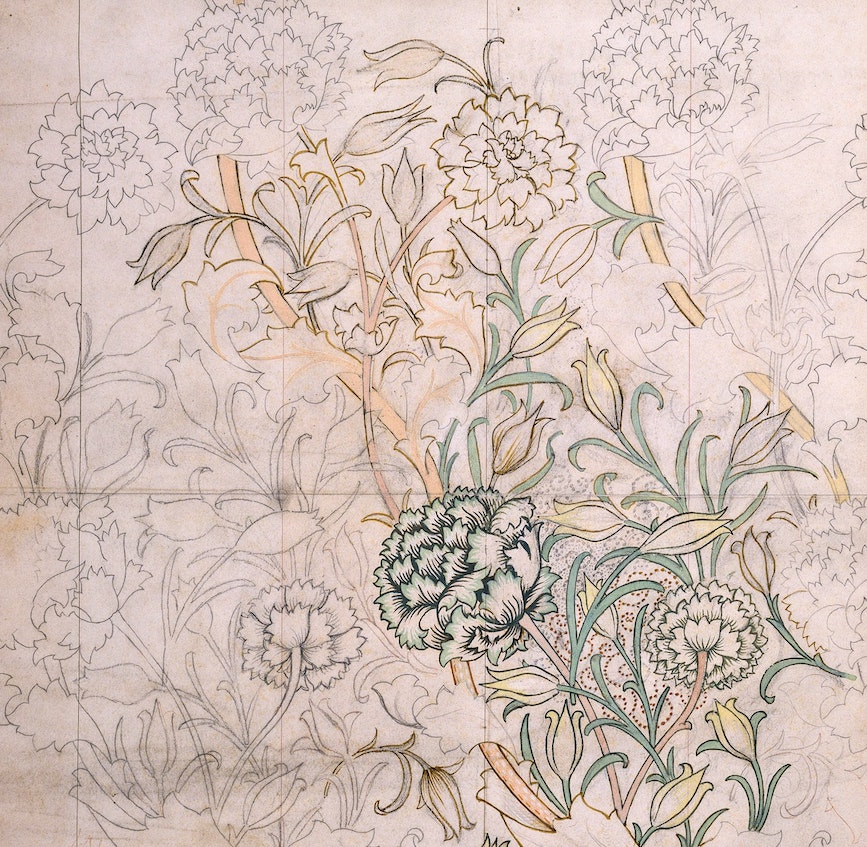
If you aren’t excited about your own drawing skills, don’t be afraid to use tracing paper to copy another design (like Wild Tulip, seen above).
As we noted in the “Draw it Yourself” section above, there are several options for transferring a hand-drawn design onto the canvas. The same methods can be applied to any design you might trace with tracing paper.
The beauty of tracing is that you don’t have to stick to just one design. You can use elements from several designs—tracing each individually with the same sheet of tracing paper—to create your own unique piece.
In addition to our vast lending library, which offers access to thousands of design inspirations, EGA members also have access to Study Boxes.
EGA Study Boxes introduce members to new techniques as well as a rich library of patterns that can be traced and used in their own unique design work. There are study boxes for samplers, study boxes focused on color theory, study boxes on cultural embroidery techniques like Japanese Rozachi and Hispanic colcha and pueblo embroidery, and more.
A single sheet of tracing paper can be populated with as many designs as you can fit on your canvas, and they can be culled from as many sources as you can find and fit together. Don’t be afraid to mine websites like Antique Pattern Library. Also, adult coloring books have increased in popularity and are often richly-detailed line drawings that trace beautifully as embroidery designs. Check out artists like Johanna Basford for inspiration.
Go Abstract
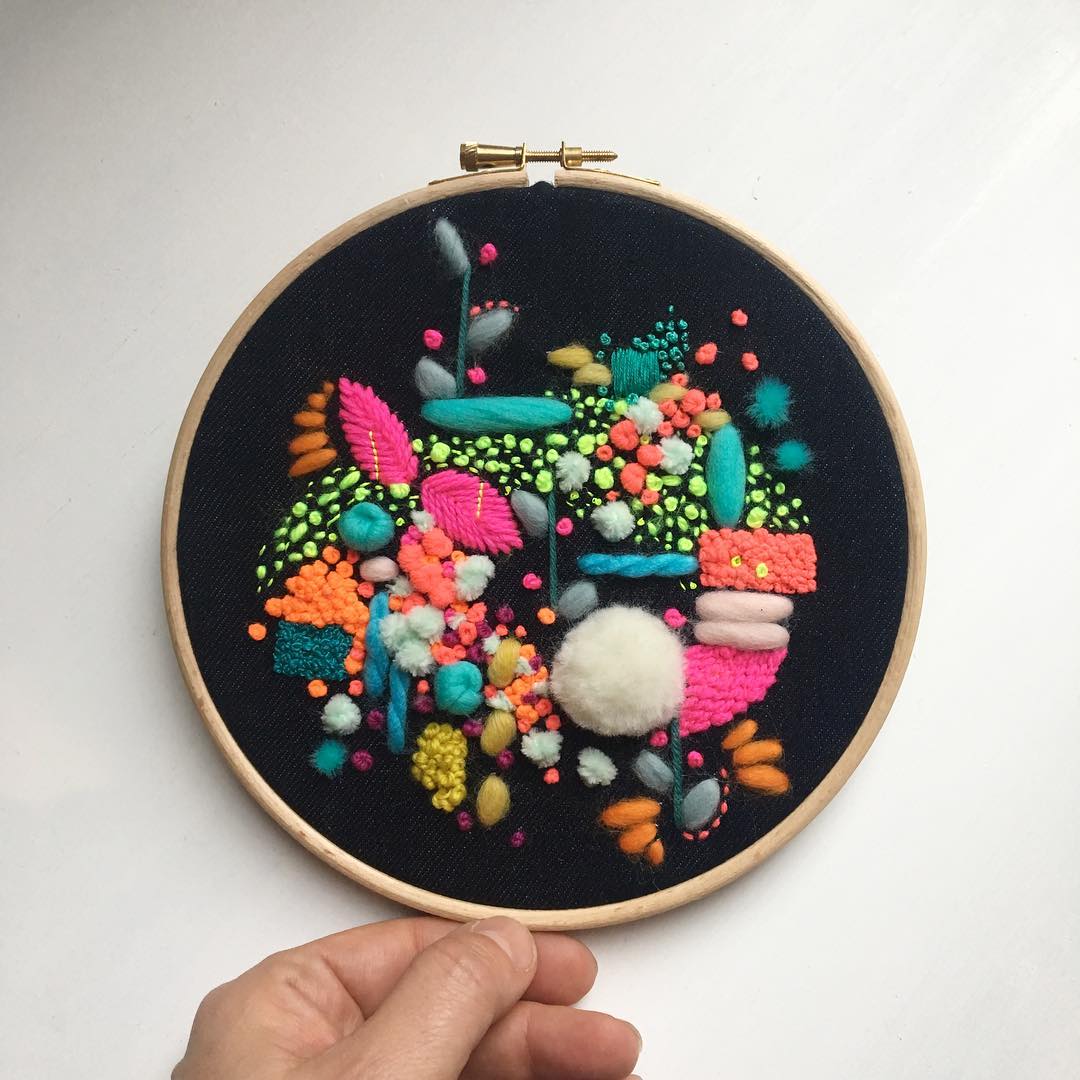
Sometimes, you just want to let loose with a design, and all the inspiration you need is the color and texture of your working materials. Enter abstract embroidery.
Abstract embroidery says it’s okay to abandon any notion of “design” and just allow your mind and needle to travel at whim. A great place to start when embarking on making an abstract embroidery piece is by reconnecting with the basics. Return to your stitch samplers, reconnect with the various decorative stitches you’ve learned, and explore new stitches that you may still be unfamiliar with (marrying different culturally-specific embroidery techniques can produce interesting results!).
Find a Teacher

Designing your own embroidery pattern doesn’t have to be a solitary process. EGA members have access to several experienced and knowledgeable needlework teachers trained in a range of skills and techniques.
There are one-on-one correspondence courses in Crazy Quilting, English Smocking, and yes, Designing Your Own Unique Embroideries. There are also online classes in techniques like Sashiko and Designing with Texture that can increase your stitch repertoire and make designing your own patterns a cinch.
Explore all the benefits of an EGA membership and let us join you on your journey of designing your own embroidery patterns!
